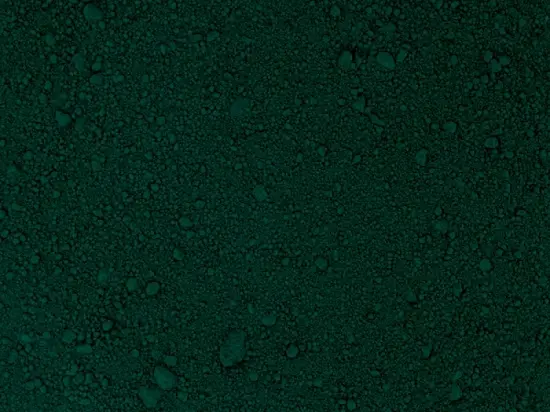
AFA (Aphanizomenon flos-aquae)
- Phycocyanin
- Original from Klamath Lake
On Demand weeks

Introduction: AFA (Aphanizomenon flos-aquae)
What is AFA?
AFA is an abbreviation for the scientific name Aphanizomenon flos-aquae. It belongs to the cyanobacteria which are also called blue-green bacteria because of their color. This coloration comes from the phycocyanin it contains.
Is AFA a microalgae?
AFA is not a microalgae but belongs to the cyanobacteria. However, it has become established in conventional discourse to refer to it as a microalga, even though this is essentially incorrect.
Where does AFA occur?
Klamath Lake in the USA has a special connection to AFA. It is home to a handful of producers who harvest, dry and export AFA from the lake. This makes Klamath Lake the only place from which AFA is exported and available in significant quantities.
However, AFA is not limited to the known lake associated with it, but occurs in a variety of ecosystems and latitudes in brackish and fresh water, growing from the Great Lakes in the United States to the Baltic Sea in northern Europe.
What are the similarities between AFA and Spirulina?
AFA and Spirulina are both cyanobacteria, often referred to in common usage as microalgae. Both blue-green bacteria contain phycocyanin, a blue pigment to which both cyanobacteria owe their color.
What are the uses of AFA?
AFA is mainly used as a dietary supplement. It is most commonly marketed and used for its antioxidant properties[4, 5].
However, AFA is also suitable as an additive to natural cosmetics, as it can have a firming effect on the skin. In addition, the fatty acids in AFA can help improve skin texture by supporting elasticity based on the ingredients[6, 7, 8, 9].
What forms is AFA available in?
AFA is available as a fine powder and as tablets.
Sources
- Aphanizomenon flos-aquae Ralfs ex Bornet & Flahault 1886 - E.A. Molinari Novoa in Guiry, M.D. & Guiry, G.M. 02 April 2022. AlgaeBase. World-wide electronic publication, National University of Ireland, Galway. (https://www.algaebase.org/search/species/detail/?species_id=30109)
- Aphanizomenon flos-aquae - Wikipedia (https://en.wikipedia.org/wiki/Aphanizomenon_flos-aquae)
- Phycocyanin – Wikipedia (https://en.wikipedia.org/wiki/Phycocyanin)
- Kay RA. Microalgae as food and supplement. Crit Rev Food Sci Nutr. 1991;30(6):555-73. doi: 10.1080/10408399109527556. PMID: 1741951. (https://pubmed.ncbi.nlm.nih.gov/1741951/)
- Kejžar J, Jagodic Hudobivnik M, Nečemer M, Ogrinc N, Masten Rutar J, Poklar Ulrih N. Characterization of Algae Dietary Supplements Using Antioxidative Potential, Elemental Composition, and Stable Isotopes Approach. Front Nutr. 2021 Feb 5;7:618503. doi: 10.3389/fnut.2020.618503. PMID: 33614692; PMCID: PMC7892597. (https://pubmed.ncbi.nlm.nih.gov/33614692/)
- Chrapusta E, Kaminski A, Duchnik K, Bober B, Adamski M, Bialczyk J. Mycosporine-Like Amino Acids: Potential Health and Beauty Ingredients. Mar Drugs. 2017 Oct 21;15(10):326. doi: 10.3390/md15100326. PMID: 29065484; PMCID: PMC5666432. (https://pubmed.ncbi.nlm.nih.gov/29065484/)
- Vieira MV, Pastrana LM, Fuciños P. Microalgae Encapsulation Systems for Food, Pharmaceutical and Cosmetics Applications. Mar Drugs. 2020 Dec 15;18(12):644. doi: 10.3390/md18120644. PMID: 33333921; PMCID: PMC7765346. (https://pmc.ncbi.nlm.nih.gov/articles/PMC7765346/)
- Castangia I, Manca ML, Catalán-Latorre A, Maccioni AM, Fadda AM, Manconi M. Phycocyanin-encapsulating hyalurosomes as carrier for skin delivery and protection from oxidative stress damage. J Mater Sci Mater Med. 2016 Apr;27(4):75. doi: 10.1007/s10856-016-5687-4. Epub 2016 Feb 17. PMID: 26886823. (https://pubmed.ncbi.nlm.nih.gov/26886823/)
- Mansour Abdelhafez, Hemmat & Mohammed, Rasha. (2018). The possible anti-inflammatory role of the blue green algae Aphanizomenon flos-aquae on skin of adult male rats. (https://www.researchgate.net/publication/335966991)
Typical applications: AFA (Aphanizomenon flos-aquae)
Typical applications

ALGANEX certificate system
Reply within twelve hours